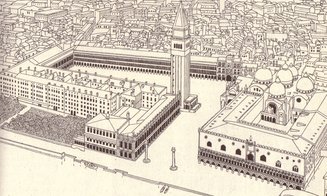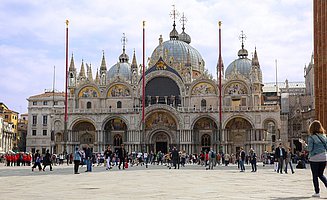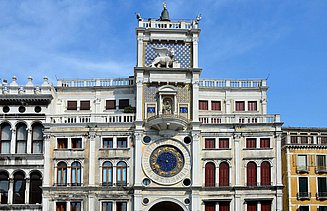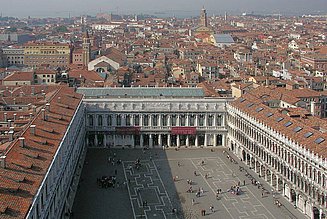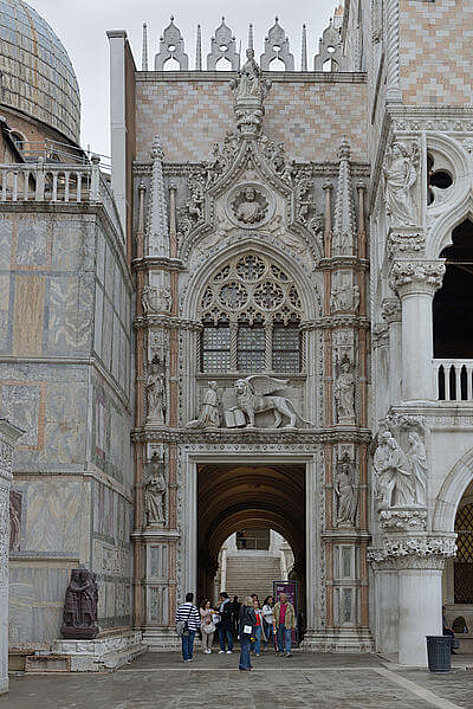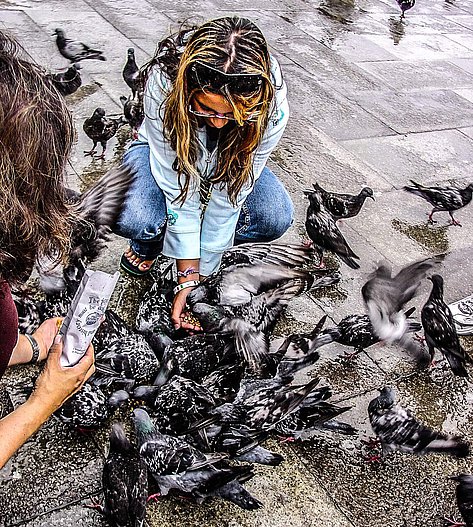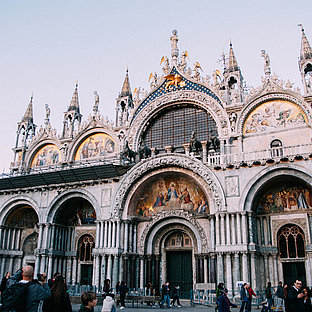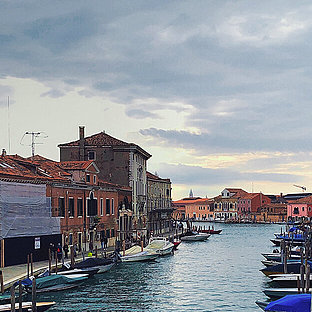St. Mark's Square: The beating heart of Venice #veniceclassics
4 min readHistory
As early as the 9th century, the small open space in front of St. Mark's Basilica was used for gatherings, announcements and the famous Venice Carnival. It was designed like a gateway to the city, through which the visitor coming over the water is guided into town. St. Mark's Square (Piazza San Marco) is the central square in Venice. In the 12th century it got its current trapezoidal shape through the drainage of the Rio Batario in the west, which had previously divided the square and a ship landing stage, which was located between the square and the Doge's Palace. Around 1340 the decision was made to rebuild the Doge's Palace, which was rebuilt in its old form even after the devastating fire of 1577.
The current outline of Piazza and Piazzetta was only finally determined by the buildings of the 16th century. St. Mark's Square received its current appearance in the 18th century. At that time, the old red brick pavement from the 13th century was replaced by the gray trachyte with the striking geometric pattern of white marble still present today.
Important buildings lining the square
St. Mark's Square hosts the most important sights of the city.
Campanile di San Marco
On St. Mark's Square, one Venetian attraction follows the next. The first thing to look out for is the magnificent campanile, the rust-red bell tower of St. Mark's Basilica and the city's landmark. Almost 100 meters high, it is the tallest building in Venice. At the foot of the campanile is the decorated Loggetta, a former meeting place for the city's nobles. Artistic reliefs, sculptures and figures represent the virtues of the Republic of Venice.
Torre dell’Orologio
Opposite the Campanile the magnificent clock tower, the Torre dell’Orologio, catches the eye. The spectacular astronomical clock on its dial made of precious lapis lazuli not only shows the time, but also the phases of the sun and the moon, as well as the signs of the zodiac. The winged St. Mark lion watches over it and at the very top of the clock tower two bronze figures strike a bronze bell every hour. The shortest route from St. Mark's Square to the Rialto Bridge is through its portal.
Museo Civico Correr and Biblioteca Marciana
Also on this side, opposite the St. Mark's Basilica, you can find out about the city's history at the Museo Civico Correr. Costumes, statues, paintings, jewelry and weapons bring the past of the lagoon city back to life. Next to the campanile stands the Biblioteca Marciana building, one of the most extensive and important libraries in Italy. In addition to a million books, it also stores 24,000 16th century prints and 13,000 Greek, Latin and Oriental manuscripts.
Piazetta San Marco and Doge's Palace
The Biblioteca Marciana architecturally connects St. Mark's Square with the so-called Piazetta San Marco, a part separated from St. Mark's Square with the two pillars of Venice's Saint Mark, depicted as a winged lion, and Theodorus with spear and lindworm. The piazetta extends to the famous Grand Canal and leads past the magnificent Doge's Palace, the former seat of the government and Justice of the Republic of Venice.
Procuratie and Porta della Carta
The rest of St. Mark's Square is enclosed by the Procuratie, which have once been the administrative premises. The old buildings fell victim to a fire in the early 16th century and were rebuilt until the 18th century. Among the numerous souvenir shops and restaurants on the ground floor of the Procuratie, Café Florian is situated here since 1683 and is therefore the oldest café in Europe.
Between the Doge's Palace and St. Mark's Basilica, the Porta della Carta rises as the impressive west entrance to the Doge's Palace. Behind it on the Scala dei Giganti the Doge coronations were previously celebrated. Above the portal the Porta della Carta carries a sculpture of a doge kneeling in front of Venice, shown as a winged lion.
Pigeons, tourists, musicians and artists
To feel the unique atmosphere of St. Mark's Square, you don't have to enter any of the buildings on square. It is enough to stroll amidst pigeons, tourists, musicians and artists over the pavement decorated with white marble and let the flair of Venice work on you.
St. Mark's Square is probably the only place in the world where feeding the pigeons is welcome. Pigeon food is even sold, which the pigeons pick directly from the visitors' hands. You can imagine how many pigeons populate St. Mark's Square.
Those who stay in Venice for longer should definitely visit St. Mark's Square at different times of the day. In the morning, the legendary square seems deserted, few tourists literally get lost in the endless space. The later it gets, the livelier, if not to say, the more hectic it gets before it exudes a romantic atmosphere with countless street musicians and magnificent lights at dusk and at night.


